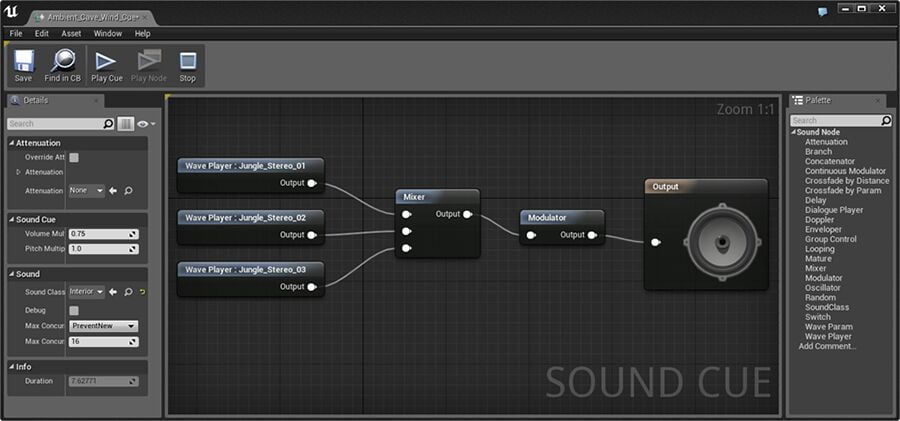Unreal Engine 4 vs Unreal Engine 5: A Comprehensive Comparison
In the world of game development, the Unreal Engine has long been a powerhouse, enabling developers to create stunning and immersive gaming experiences. With the release of Unreal Engine 5 (UE5), it’s important to understand how it compares to its predecessor, Unreal Engine 4 (UE4). This article will delve into the key differences between Unreal Engine 4 and Unreal Engine 5, exploring the new features and improvements that UE5 brings to the table.
Introduction to Unreal Engine 4 and Unreal Engine 5
Before we dive into the comparison, let’s briefly introduce both versions of the engine.
Unreal Engine 4
Unreal Engine 4 was released in 2014 and has been a popular game development engine for many years. It introduced significant improvements over its predecessor, including a new visual scripting system called Blueprint, improved lighting and shading capabilities, and a more user-friendly interface.
Unreal Engine 5
Unreal Engine 5, released in 2022, represents a major leap forward in game development technology. It introduces several groundbreaking features that aim to revolutionize the way games are created and experienced.
Key Differences Between Unreal Engine 4 and Unreal Engine 5
Now, let’s explore the main differences between UE4 and UE5.
Graphics and Rendering
One of the most significant areas of improvement in Unreal Engine 5 is in graphics and rendering capabilities.
Nanite
Nanite is a virtualized micropolygon geometry system that allows for the creation of games with massive amounts of geometric detail. This technology enables developers to directly import film-quality source art consisting of millions of polygons into Unreal Engine 5, and it will maintain a real-time frame rate without a noticeable loss of fidelity.
In contrast, Unreal Engine 4 required developers to carefully manage polygon counts and use various optimization techniques to maintain performance.
Lumen
Lumen is a fully dynamic global illumination system in UE5 that provides realistic lighting without the need for pre-baked lightmaps. This system calculates the math on how light bounces in a scene in real-time, allowing for more dynamic and interactive lighting scenarios.
UE4, while capable of impressive lighting, relied more heavily on static lighting and pre-computed global illumination, which limited the dynamism of lighting changes in real-time.
Performance and Scalability
Unreal Engine 4
UE4 was designed to work across a wide range of hardware, from mobile devices to high-end PCs. However, achieving optimal performance often required significant optimization work, especially for more complex games.
Unreal Engine 5
UE5 introduces several features aimed at improving performance and scalability:
- World Partition: This system automatically divides the world into a grid and streams the necessary cells, allowing for the creation of massive worlds without performance issues.
- One File Per Actor: This feature improves collaboration in large teams by allowing multiple team members to work on different aspects of the same level simultaneously.
Audio Improvements
Unreal Engine 4
UE4 had a robust audio system, but it was somewhat limited in terms of real-time audio manipulation and spatialization.
Unreal Engine 5
UE5 introduces MetaSounds, a high-performance system that offers complete control over audio DSP graph generation of sound sources, allowing for more complex and dynamic audio experiences.
User Interface and Workflow
Unreal Engine 4
UE4 made significant strides in improving the user interface and workflow for developers compared to its predecessors. The introduction of the Blueprint visual scripting system was a game-changer, making game development more accessible to non-programmers.
Unreal Engine 5
UE5 builds upon the improvements made in UE4 and introduces new features to enhance the developer experience:
- Improved Content Browser: The new content browser in UE5 offers better organization and search capabilities.
- Enhanced World Outliner: The updated World Outliner in UE5 provides better scene organization tools.
Game Development with Unreal Engine 4 vs Unreal Engine 5
Now that we’ve covered the key differences, let’s explore how these changes impact game development.
Graphics and Visual Fidelity
Unreal Engine 4
UE4 is capable of producing stunning visuals, but it often requires significant work from artists and developers to optimize assets and implement advanced rendering techniques.
Unreal Engine 5
UE5’s Nanite and Lumen technologies allow developers to create photo-realistic graphics with less manual optimization. This can potentially speed up development time and allow for more detailed and dynamic game environments.

Performance Optimization
Unreal Engine 4
In UE4, performance optimization is a crucial part of the development process, often requiring careful management of asset complexity, draw calls, and lighting scenarios.
Unreal Engine 5
While optimization is still important in UE5, features like Nanite and Lumen are designed to handle much of this automatically, potentially reducing the time developers need to spend on optimization.
Learning Curve
Unreal Engine 4
UE4 has a well-established ecosystem with numerous tutorials, resources, and a large community, making it relatively accessible for new developers.
Unreal Engine 5
While UE5 builds on many concepts from UE4, its new features introduce a learning curve. However, Epic Games has provided extensive documentation and tutorials to help developers transition.
Use Cases: When to Use Unreal Engine 4 vs Unreal Engine 5
While Unreal Engine 5 brings many impressive new features, there are still scenarios where using Unreal Engine 4 might be preferable.
Use Unreal Engine 4 When:
- Your project is already well underway in UE4
- You’re developing for platforms that don’t yet fully support UE5
- Your team is more familiar with UE4 and you have a tight deadline
- You’re working on a smaller project that doesn’t require UE5’s advanced features
Use Unreal Engine 5 When:
- You’re starting a new project, especially one that requires high-fidelity graphics
- You’re developing for next-gen consoles or high-end PCs
- Your project could benefit significantly from features like Nanite and Lumen
- You want to future-proof your development pipeline
Real-World Applications: Unreal Engine in Action
To truly understand the power of Unreal Engine, it’s helpful to look at some of the amazing games that have been created using this technology. For a deep dive into some of the most impressive Unreal Engine games, check out our article on the Top 10 Unreal Engine Games. This list showcases the versatility and capabilities of Unreal Engine across various genres and styles.
Moreover, if you’re still weighing your options between different game engines, our comprehensive comparison of Unity vs Unreal can provide valuable insights to help you make an informed decision for your project.
Navigating the Unreal Engine Landscape with Codelivery
While understanding the differences between Unreal Engine 4 and Unreal Engine 5 is crucial, implementing these powerful tools effectively in your game development project can be challenging. This is where partnering with an experienced game development company like Codelivery can make all the difference.
Codelivery specializes in Unreal Engine development, leveraging the full potential of both UE4 and UE5 to create stunning, high-performance games and applications. Our team of expert developers stays at the forefront of Unreal Engine technology, ensuring that your project benefits from the latest advancements in game development.
Whether you’re looking to create a visually stunning AAA title with UE5’s Nanite and Lumen technologies, or you need to optimize a complex UE4 project for maximum performance, Codelivery has the expertise to bring your vision to life. We also excel in AR/VR development, harnessing the power of Unreal Engine to create immersive, cutting-edge experiences.
By choosing Codelivery as your Unreal Engine development partner, you’re not just getting technical expertise – you’re gaining a collaborator who understands the nuances of game design, user experience, and the ever-evolving gaming market. Our team can guide you in choosing the right version of Unreal Engine for your project, ensuring that you leverage the most appropriate tools and features for your specific needs.
The Future of Game Development with Unreal Engine
As we look to the future, it’s clear that Unreal Engine 5 represents a significant step forward in game development technology. Its advanced features like Nanite and Lumen, combined with improvements in workflow and performance, position it as a powerful tool for creating next-generation games.
However, it’s important to note that Unreal Engine 4 remains a robust and capable engine. Many successful games continue to be developed using UE4, and it will likely remain a viable option for certain types of projects for years to come.
For game developers and Unreal game development companies, the choice between UE4 and UE5 will depend on the specific needs of each project. It’s crucial to evaluate factors such as target platforms, required visual fidelity, team expertise, and project timeline when deciding which version of the engine to use.
Conclusion
The comparison between Unreal Engine 4 and Unreal Engine 5 reveals significant advancements in graphics, performance, and developer workflow. While UE5 introduces groundbreaking features like Nanite and Lumen, UE4 remains a powerful and widely-used engine in its own right.
For developers, the decision to use UE4 or UE5 should be based on project requirements, target platforms, and team capabilities. Both engines offer robust tools for creating impressive games, and the choice between them will depend on the specific needs of each project.
As the game development landscape continues to evolve, staying informed about the capabilities of different engines is crucial. Whether you choose to use Unreal Engine 4 or make the leap to Unreal Engine 5, the Unreal Engine ecosystem provides powerful tools to bring your gaming visions to life.
Remember, the engine is just a tool – the creativity and skill of the development team are what truly bring a game to life. Whether you’re using UE4 or UE5, focus on creating engaging gameplay, compelling stories, and memorable experiences for your players.













